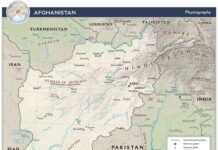Context
 India’s foreign minister Salman Khurshid carried out a three-day visit to Iran starting May 3rd, and was in Beijing last week, as Pakistan conducted landmark elections. India was recently caught in a dangerous border stand off with China in the Ladakh area. The visits have taken place at a time when there is increased western pressure to isolate Iran militarily, and via economic sanctions.
India’s foreign minister Salman Khurshid carried out a three-day visit to Iran starting May 3rd, and was in Beijing last week, as Pakistan conducted landmark elections. India was recently caught in a dangerous border stand off with China in the Ladakh area. The visits have taken place at a time when there is increased western pressure to isolate Iran militarily, and via economic sanctions.
As compared to Pakistan, India has mostly adopted an ‘on again and off again’ approach towards Iran. Due to security concerns related to Pakistan, it earlier abandoned being part of the Iran Pakistan (IP) gas pipeline project. On the other hand, even under threat of US sanctions, Pakistan has committed to move ahead with the project and is improving its political and economic ties with Iran.
The question is what brought about the recent change in Indian position despite western, Arab, and Israeli pressure to corner Iran.
Analysis
Indian Dilemma and Regional Playground
With Afghan conflict showing no signs of prompt settlement, and the India’s ties with Pakistan also held hostage to one issue or the other, its gateway to Central Asia appears blocked.
Moreover, with the security situation of the Middle East on the simmer, India simply cannot afford adverse relations with Iran as well. As evaluated recently by PoliTact, India and Pakistan are both caught in a delicate balancing act; with the Sunni Gulf states on the one hand, and Shiite Iran on the other. However, unlike Pakistan, India also has to factor in its strategic ties with Israel and US.
These pressures may have pushed India to reexamine its ties with Iran and reconsider its approach to the IP gas pipeline project. Meanwhile, the country has also been working to by pass Pakistan altogether to reach Afghanistan and further north. And this is why the Iranian Chahbahar port becomes significant.
India has finally conveyed to Iran its intent to develop the port with the investment of $100 million. Strategically, the choice to invest in the port could be a tit for tat reaction for Pakistan’s decision to handover Gawadar Port to a Chinese government owned firm. A preferential treatment and tariff reductions deal is already in place between Iran and Afghanistan, to expedite Indian merchandise heading to Afghanistan and Central Asia.
In essence, we are now entering a new phase where Pakistan, India and Afghanistan, are developing economic and political ties with Iran, irrespective of western, Arab, and Israeli apprehensions in this regard. At the same time, these countries are playing each other to gain economic and political benefits. Consider the following, for example.
Iranian Motives
Iran needs to demonstrate that despite the efforts of US, Israel, and Gulf states to isolate it economically, the country has been able to develop trade ties with in the region. Moreover, the economic and security dealings of the nation with India and Afghanistan, motivates Pakistan to forge ahead with the IP gas pipeline project. As long as the Afghanistan remains unstable, alternative to the IP project, TAPI, is unlikely to make headway and that becomes an additional source of frustration for India.
Afghan Goals
On the other hand, by trading with Iran and India through port Chahbahar, land locked Afghanistan exerts pressure on Pakistan to assist in the reconciliation process. Pakistan also risks loosing the benefit of commerce between India and Afghanistan via the road link passing through the country, if trade flourishes via the Chahbahar. Afghanistan and Pakistan have a trade and tariff agreement in place to promote over land trade between India and Afghanistan.
Pakistan’s Posture
Meanwhile, Pakistan having suffered rough treatment at the hands of US in the recent past, is showcasing its ability to move closer to Iran and China. Furthermore, with the IP project, it can undermine the leverages of Afghanistan and India. As explained above, this is in turn puts pressure on India to join the IP project, since for the implementation of TAPI project the stability of Afghanistan is a prerequisite.
American Pressures
This dynamic also puts pressure on US policy in the region. On one hand, it wants to Isolate Iran to deal with the security situation of Middle East, and due to its connection with the volatile Syrian crisis. The tussles over Syria have now taken a dramatic turn with Russia and China getting involved directly. Russia has threatened to supply weapons to the Syrian regime, if US decides to go ahead with its arms delivery to the opposition forces there. China, for its part, is moving closer to Israel and has proposed its own version of Middle East peace initiative.
The sanctions on Iran inhibits regional trade, helps in keeping India in line to counter China, and gives US the control of the agenda in the region. However, the American prestige is dented further if no one is willing to follow the sanctions on Iran in the region. If the policy on Iran causes its strategic ally, India, to pursue it own interests, or more in line with BRICS, the larger American strategic posture is threatened.
This context helps explains the present Indian predicament and anxiety. It does not want to be left alone in the region while following western polices. It has a key strategic quandary to resolve, which gets more complex by the day. This is causing the country to move ahead in dealings with Iran, especially after Pakistan showed its resolve towards the IP project, despite consequences for the Pakistan-US ties.
As noted earlier, Pakistan and India are managing a similar balancing act in their ties with Iran, Gulf States, and with the US. As Afghanistan and Pakistan promote trade ties with Iran, India does not want to be left behind. Furthermore, the country desires to avoid losing access to Central Asia via both Pakistan and Iran. While India can create challenges in the way of Pakistan’s Look East policy, the country still has the alternative of China. This is similar to how India is using Iran as a substitute to Pakistan, to reach Central Asia.
With the arrival of Nawaz Sharif to power, a new push for improving Pakistan-India ties are already afoot.



